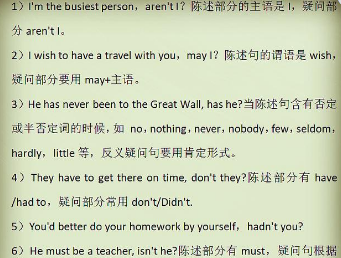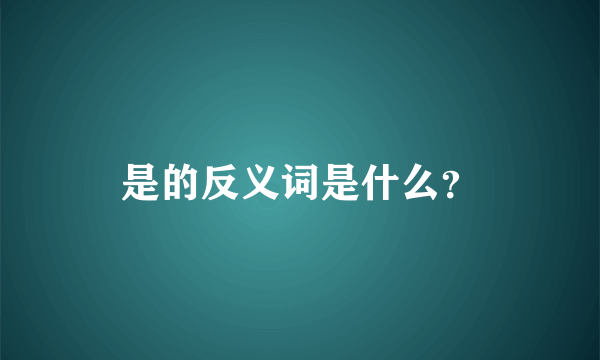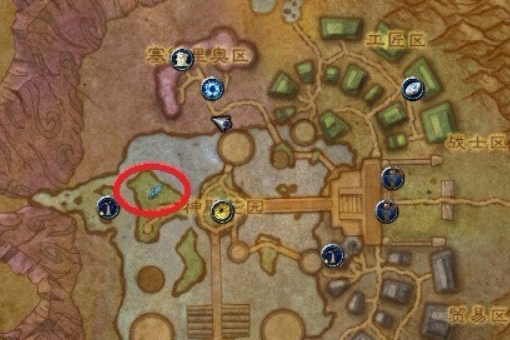反义疑问句的用法归纳
的有关信息介绍如下:反义疑问句的用法归纳:
1、当陈述句的主语为anybody, anyone, everybody, everyone, somebody, someone, nobody, no one时,反意疑问句的主语用they。也可用he,尤其是nobody, no one等作主语,具有否定概念时。如:
Somebody phoned while I was out, didn’t they?
Everyone enjoyed the party, didn’t they?
Nobody wants to go there, does he?
Nobody says a word about the incident, don’t they?
Somebody borrowed your bike yesterday, didn’t they?
Anybody can do it, can’t they?
2、当陈述部分的主语是I,而句子又用来征询对方的意见时,附加疑问句中的主语用you。如:
I find English very interesting, don’t you?
I don’t like that film, do you?
3、当陈述句的主语为everything, anything, nothing, something等时,反意疑问句的主语用it。
如:
Everything is all right, isn’t it?
Nothing can stop us going forward, can it?
4、当陈述部分的主语是指示代词this, that或these, those时,附加疑问句中的主语分别用it和they。如:
This is important, isn’t it?
That isn’t correct, is it?
These are your friends Tom and Jack, aren’t they?
5、当陈述句的主语为one时, 反意疑问句的主语在正式情况下用one;在非正式情况下用you。如:
One should learn from others, shouldn’t one / you?
One can’t be one’s own master, can one?
One can not be too careful, can one?

6、当陈述句的谓语部分含有had better, would rather, would like, ought to时, 反意疑问句的谓语用相应的助动词。如:
You’d better go now, hadn’t you?
You’d rather go there early, wouldn’t you?
He’d like to go there, wouldn’t he?
She ought to go there by train, shouldn’t / oughtn’t she?
Such things ought not to be allowed, ought they?
7、当陈述句的谓语是wish时, 反意疑问句的谓语用may, 且前后两个部分都用肯定式。如:
I wish to go home now, may I?
I wish to have another piece of cake, may I?
8、当陈述句的谓语部分含有have to, had to时, 反意疑问句的谓语部分用do的适当形式。如:
We have to get there at 8 o’clock tomorrow, don’t we?
They had to take the early train to go there, didn’t they?
9、当陈述句的谓语部分含有used to时, 反意疑问句的谓语部分有两种表达方式didn’t / usedn’t。如:
He used to get up early, didn’t / usedn’t he?
The old man used to smoke, didn’t he?或usedn’t he?
Tom used to live here, usedn’t he?或didn’t he?
10、感叹句后的附加疑问句的谓语动词需用be的现在时,且常用否定形式。如:
What a clever boy, isn’t he?
What a lovely day, isn’t it?



